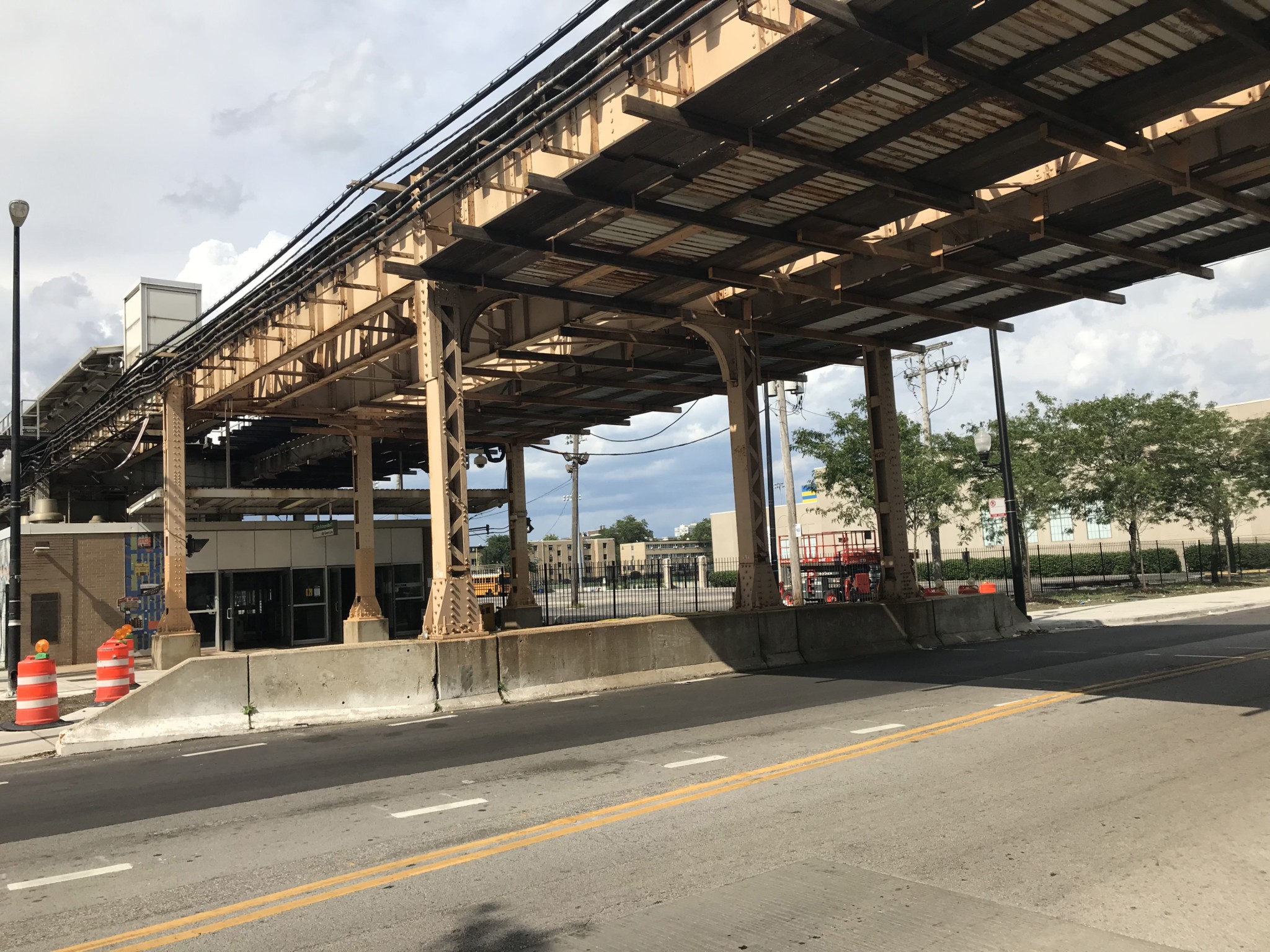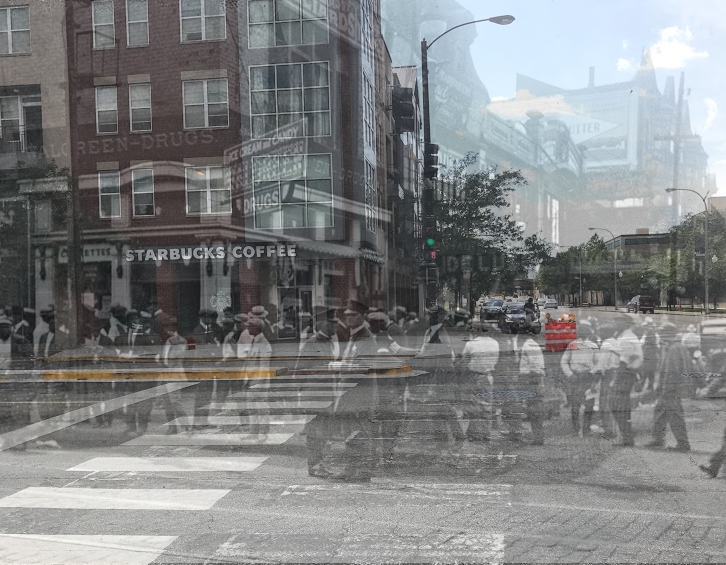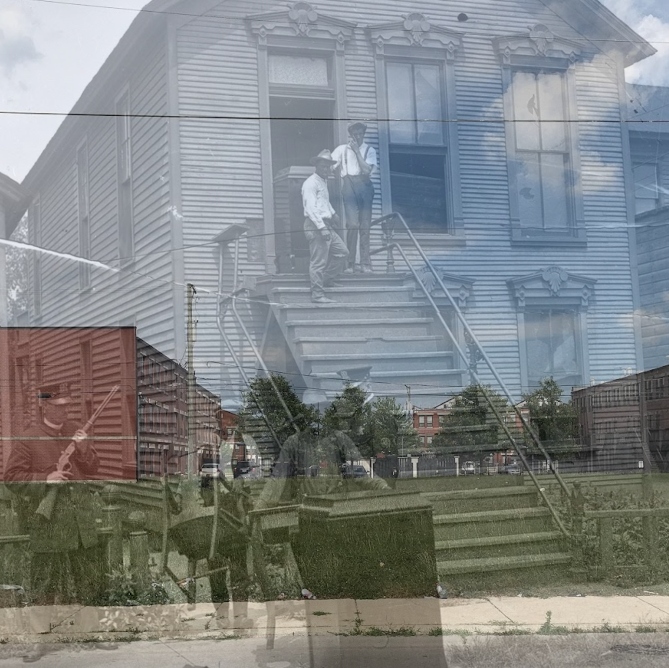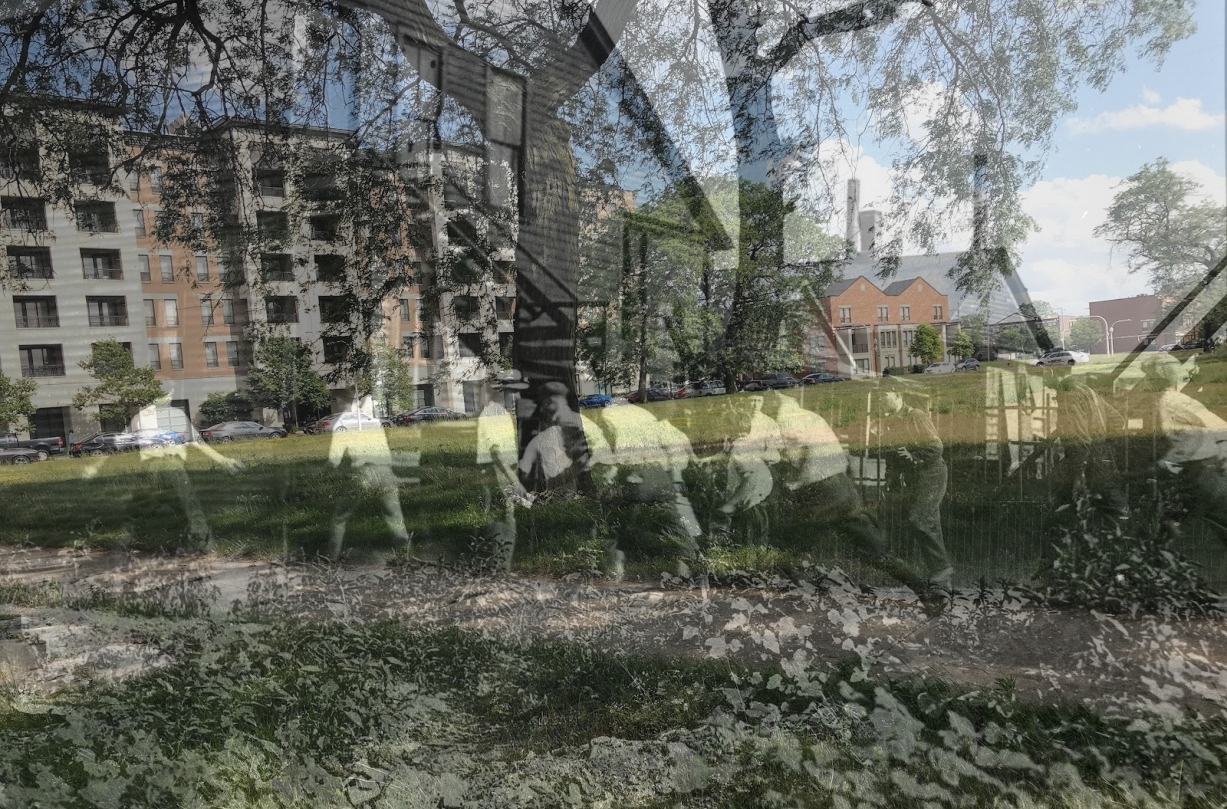In 2018, Western Illinois University Professor Peter Cole mobilized a small group of community organizers, teachers, community organizations, professors, and researchers to consider ways to commemorate the anniversary of the Chicago Race Riot of 1919. This group is known as the 1919 Chicago Race Riot Commemoration Project, or CRR19. CRR19 seeks to raise awareness about the worst incident of racial violence in Chicago’s history by installing artistic markers in the sidewalks near each location where the thirty-eight people were killed in 1919. CRR19 is inspired by German artist Gunter Demnig’s Stolpersteine project, which uses embedded brass “stumbling stones” in sidewalks to honor Holocaust victims in Europe. In 1996, Demnig installed twenty markers in Germany. Presently, there are over 70,000 across Germany and twenty-four other European countries.
The CRR19 project helps Chicago confront its racist and violent past. It sets a path toward achieving social justice and equity by acknowledging the horrors of the past and discussing the ways in which structural inequities persist.
In 2019, Franklin Cosey-Gay, the executive director of the Chicago Center for Youth Violence Prevention (CCYVP) at the University of Chicago, and Alicia Bunton, Director of Community Affairs at the Illinois Institute of Technology (IIT), joined CRR19. Ms. Bunton helped organize and hosted the public launch at IIT on July 27th, 2019, the centennial of Eugene Williams’s murder. Professor Cole, Dr. Cosey-Gay, and Ms. Bunton convened community partners, including Go Bronzeville and Slow Roll Chicago, to support CRR19 in a bike tour of historically relevant locations in Bronzeville and neighboring Bridgeport, ending along the lakefront near where Williams was murdered. After the bike tour, attendees returned to IIT for the CRR19 launch, which featured VanderCook College of Music’s One City jazz orchestra, 3rd Ward Aldermn Pat Dowell and 4th Ward Alderman Sophia King , Pastor Chris Harris of Bright Star Church of God in Christ, and architectural critic Lee Bey. The speakers talked about the import of this history and gave endorsements of CRR19 markers. In addition, the program included youth groups Good Kids Mad City, youth interns at Public Narrative, and One Summer Chicago students with Bright Star Community Outreach, a nonprofit led by Pastor Harris.
Dr. Cosey-Gay, who currently volunteers as the co-director of CRR19, worked with CCYVP One Summer Chicago Students to train them in qualitative interviewing and photovoice methods as a way to understand collective memory of the Chicago race riot and examine how the locations of race riot deaths look today. On October 22nd at the University of Chicago’s Gray Center for Arts and Inquiry, Professors Eve Ewing and John Clegg convened a symposium on the Chicago Race Riot. Lawrence and Raggs’s photos and vignettes were featured in a gallery display for the entire symposium. The students’ aim was for the photos and vignettes to create opportunities for discussion on race, racism and the persistence of structural and interpersonal violence. Lawrence was inspired by Jun Fujita, the Japanese-American photojournalist and Phillips High School graduate, to superimpose photos of abandoned lots onto images of a once-dense community to highlight not only interpersonal trauma but also present-day structural trauma.
Here we present an excerpt of the photos and interviews from their project.

Tammy Gibson
We interviewed Tammy Gibson, a travel historian who has lived in Chicago her whole life. She is proud of the work she does as a travel historian, but is more proud of teaching what she learns about Black history to the next generation. Ms. Gibson shared a story about the time she was in a California cemetery trying to locate the graves of Sam Cooke and Sammy Davis Jr. While searching, a white woman yelled at her that she shouldn’t be there. Ms. Gibson and the woman got into a heated argument, and the white woman said she was going to call the police because she felt her life was being threatened, even though Gibson never said anything threatening to the woman. Ms. Gibson felt like the woman was saying she didn’t belong there because she was Black.
As a travel historian who focuses on the hidden heroes of black history, Gibson already had a considerable amount of knowledge on the Chicago 1919 Race Riots. She still had a lot of thoughts on the riots. Ms. Gibson felt the riots were handled horribly by the City of Chicago and the Black community in Chicago as a whole. The city never apologized nor did any of the attackers get penalized for what they did. For example, the man that threw the rock at Eugene Williams never went to jail, the people whose homes got destroyed never got justice. Though Black people fought back, they got nothing out of this riot but the same old problems and the Black community never really recovered. With this, she wanted to find the gravesite of the man that started it all, Eugene Williams, realizing that his grave was in the old part of Lincoln cemetery where there are many unmarked graves. In 2018, Ms. Gibson worked with the employees at Lincoln Cemetery, especially Pathia Reese, the Lincoln Cemetery Family Service Counselor, to find the exact location of Eugene’s grave. After one year and countless phone calls, they located Eugene Williams gravesite.
Now Ms. Gibson is looking for the gravesites of other victims of the 1919 race riots and is trying to put together funds to get a headstone for Eugene’s grave, at the moment there is only a pole saying “HERE LIES EUGENE WILLIAMS” with an American flag ribbon tied around it. While talking about this temporary marker with Ms.Gibson, she expressed her anger and confusion for why the flag of the country that didn’t even arrest Eugene’s killer was placed on his grave.
When asked about the differences between now and 1919, Ms.Gibson does not believe racism has changed. Chicago is still highly segregated, but now our neighborhoods are being gentrified more; there are fewer Black-owned businesses, and we do not support each other. The only difference she says is that racism is just hidden better now. Her hope for the Black community though is that we get back the sense of community we used to have that we come together and work as one.

Bobby
We interviewed seventy-nine-year-old, Bobby, who has been living in Chicago her whole life. She has also been living in Oakwood Shores Senior Residence for nine years. She grew up in the eastern section of the Chicago community Near West Side, which was locally referred to as Jewtown because of the Eastern European Jewish residents who immigrated in the late nineteenth century. During the great migration, Jewtown was predominantly Black residents, but most of the businesses remained Jewish-owned. She never really encountered racism on a personal level, but she knew when she was growing up, there were places Black people couldn’t live or go. While growing up, she realized that even though her neighborhood was made up of African Americans, the only thing that was Black-owned was a small corner store. When talking to Bobby about the 1919 Chicago Race Riots, even though the details were unfamiliar to her, she was not surprised. It did not shock her that something like this happened in Chicago, and no one talked about it or addressed it. As Bobby put it, “Kids today ain’t learning nothing.” She thinks what’s wrong with our society today is the way people are raising their kids. Bobby believed parents today are not teaching their kids values and respect which resulted in what she described as a generation of killers and thought that the only way for the Black community to move forward is to stop killing each other.

Sydney Lawrence is a fifth-generation Bronzeville native who lives in the home of her great-great grandparents who lived through the Chicago Race Riots. Her great-great grandfather was a Pullman Porter. Sydney is a freshman at Harold Washington College studying to be an art historian. She graduated from Mother McAuley Liberal Arts High School.
Antoinette Raggs is a senior at Kenwood Academy High School. She is a member of Kenwood’s student government and an ambassador for Women in STEM. She is currently applying to colleges across the country and hopes to study gender and women’s studies.
Sydney and Antoinette are members of the Ladies of Virtue mentoring program. They completed this photovoice and oral history project as part of One Summer Chicago with the Chicago Center for Youth Violence Prevention at the School of Social Service Administration at the University of Chicago.



